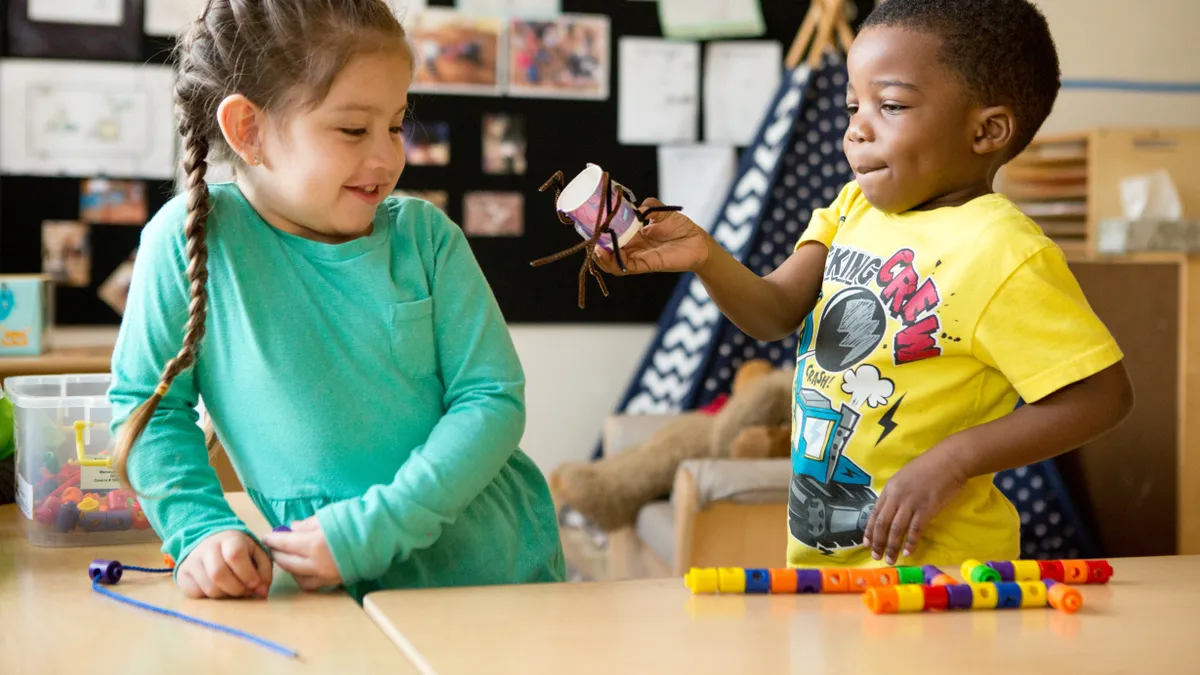Dive Brief:
- After-school programs are struggling to meet the needs of students they traditionally support, according to surveys released by the Afterschool Alliance and National Summer Learning Association. Budget cuts and the inability of low-income students to get to the programs contribute to the problem.
- Seventy-three percent of programs serving higher-income students were open in some capacity during the pandemic compared to 38% of those serving lower-income students, showed the surveys of more than 1,000 respondents across the U.S. Sixty-nine percent of providers said they are concerned that the children who need services can’t access them. This summer, the programs could only serve about 50% of the number of students they served in 2019 due to social distancing, student-to-staff ratios and other pandemic-related factors.
- After-school programs are also struggling with the threat of losing funding. Eighty-nine percent of respondents said they are concerned about long-term funding and the future of their programs. Furloughs or staff layoffs could occur in 71% of the programs in the coming months.
Dive Insight:
As social distancing ramped up last spring, many after-school programs moved from in-person to providing online activities in efforts to keep kids engaged. As of early April, three out of four after-school programs were not operating on a normal schedule. Seventy-eight percent were providing remote services or using other ways to stay connected. Some programs provided lunches, groceries and diapers for families hard hit by the pandemic.
The Afterschool Alliance, along with other after-school program associations, said the groups can be part of the economic recovery by continuing to provide after-school and summer programs for students. But funding response from the Department of Education has been slow.
“I don’t understand why we aren’t all putting kids front and center,” Jodi Grant, executive director of the Afterschool Alliance, told Education Dive. “If we meet the needs of the kids, that’s how we are going to keep our economy going. Many families need someone to watch their kids.”
Grant said that the private sector is finding solutions. Day cares are offering enrichment programs and college students are making extra money working with students in distance learning classes.
“These are all great things for people who can afford it, but it does nothing to help fill the equity gap,” she said.
Part of the solution may be home-based child care and preschool centers, which are more intimate and therefore fit the small-group protocol. Seventeen states publicly fund preschool programs that allow community-based providers to receive contracts. Of the 600,000 school-aged children in programs that receive federal funds through the Child Care Development Fund, roughly 25% are in home-based facilities, and many in-home providers have been able to continue operating during the pandemic.
Now, the industry may be called upon to provide services for older children who would typically be in school during the day and school-based programs after school.






 Dive Awards
Dive Awards








